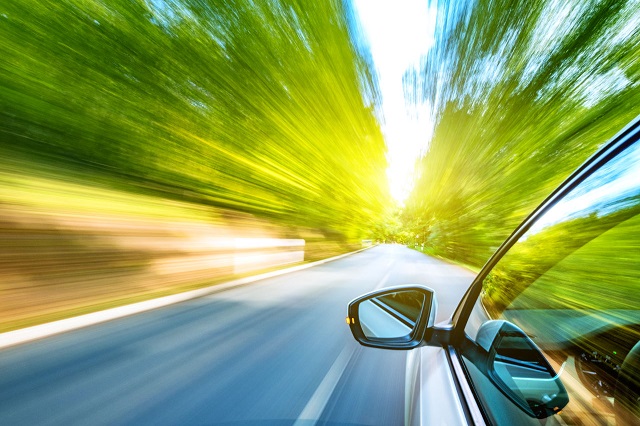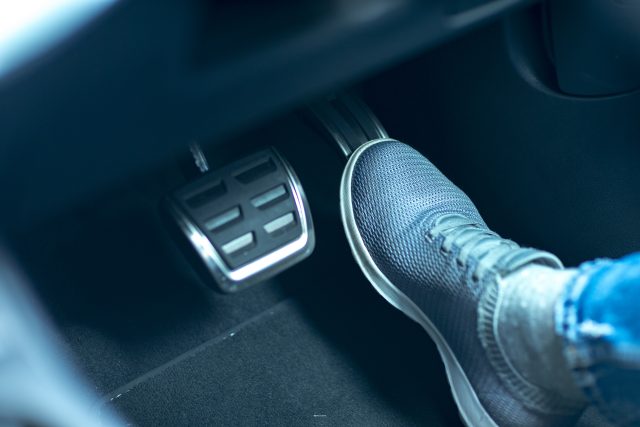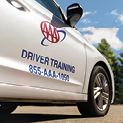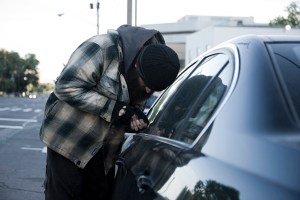A gas pedal sticking is a frightening thought, and thankfully, it doesn’t happen often. If it does, the important thing to remember is not to panic. Even if you can’t get the gas pedal unstuck, you can stop the car. If you ever find yourself in this situation, keep your cool and follow these steps to bring the car safely to a stop.
What Causes Gas Pedal Sticking
There are several reasons why a gas pedal may stick. Often, it’s as simple as the floor mat moving and getting in the way of the pedal. Always check that the mat is sitting on the floor correctly before you drive. If it’s worn down to the point that it slips while you’re driving, remove it and replace it as soon as possible. Also, never stack floor mats on top of each other; if you swap out seasonally, completely remove carpeted mats in winter and rubber mats in summer.
A sticking gas pedal may also be caused by a dirty throttle that needs to be cleaned. Over time, carbon can build up on the throttle body or butterfly valve. This sticky buildup sometimes impedes the motion of throttle components. If the gas pedal feels stiffer than usual or moves too slowly when pressed, then it’s time to have it checked before it gets stuck. Make this a part of regular maintenance to avoid future problems.
For the best car care, find a AAA Approved Auto Repair facility near you.
What Should You Do if Your Gas Pedal Sticks?
Stay Calm
We know, this is easier said than done, but if your gas pedal is stuck, you should try not to panic. Take a deep breath and focus so you can take the appropriate action to slow down your vehicle. Start by hitting the hazard lights, so cars around you know there’s a problem.
Push the Brake Pedal Firmly
Push down on the brake pedal – hard – and keep it down. AAA’s Car Doctor John Paul, who has evaluated hundreds of cars, has found that “in nearly every vehicle, the brakes can overcome the throttle. “
If you pump the brakes or ease up, the vacuum power assist is lost and the brakes will feel stiff. Light brake application could even cause the brakes to overheat and fail, according to Paul. When in doubt, put both feet on the brake pedal.
Shift Into Neutral
The next step is to shift the transmission into neutral. Shifting into neutral stops power being sent to the wheels. Even if the accelerator is stuck and you hear the engine revving, it won’t make the car go faster.
If you have a manual transmission, don’t forget to push the clutch in first – you will need to take one foot off the brake pedal, and that’s OK. Just hold the brake pedal down with one foot, press the clutch, shift to neutral and put your left foot back on the brake pedal.

Avoid Quick Lane Changes
Your first impulse may be to get off to the side of the road as quickly as possible, but quick lane changes should be avoided. A sudden lane change at speed could cause you to lose control. If your gas pedal is stuck, you should keep the car under control with your feet on the brake pedal, put on your hazard lights and move toward the side of the road slowly. If there’s a breakdown lane, now’s the time to use it, but be sure there’s no debris or a stopped car within your line of sight.
When To Turn Off the Engine
Although it might seem like turning off the engine as soon as possible is a good idea, wait. If you turn off the engine, power assist functions including power brakes, power steering and antilock brakes all stop working. This makes it harder to control the vehicle. Instead, wait until you come to a complete stop before turning off the engine.
The exception to this rule is if the car won’t shift into neutral, which is unlikely. Only then should you turn off the engine while the vehicle is still moving. Just remember, steering and braking will feel quite different and will require more effort to operate.
Call for Help
Once the car is safely stopped and the engine is off, it’s time to call for help. Do not try to start the car and drive away, even if the gas pedal seems to be freely moving again. There’s a risk that it could become stuck again. Call AAA Roadside Assistance for help, then have your car inspected by a mechanic and repaired.
This topic was suggested by Your AAA reader Katie D. Do you have an idea for a story you’d like us to cover? Ask us in the comments below.
















